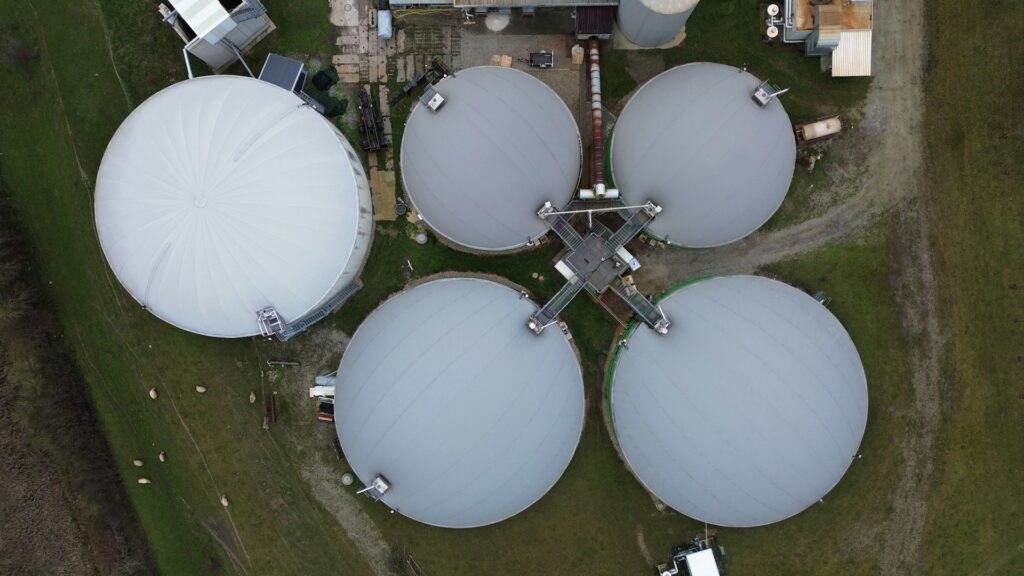Biogas plants convert organic waste into renewable energy by anaerobic digestion, a process where microorganisms break down biodegradable material in the absence of oxygen. One of the most critical factors determining the efficiency, yield, and economics of a biogas plant is the choice of feedstock—the organic raw material fed into the digester.
Different feedstocks vary widely in their biogas potential, nutrient content, digestion characteristics, and handling requirements. Selecting the right feedstock or feedstock mix can optimize biogas production, reduce operational issues, and ensure long-term sustainability.
This blog provides a detailed comparison of common biogas feedstocks, their characteristics, advantages, and limitations to help stakeholders make informed decisions.
What Makes a Good Feedstock for Biogas Production?
An ideal biogas feedstock should have:
- High Biogas Yield: Rich in biodegradable organic matter, especially carbohydrates, fats, and proteins.
- Stable Composition: Consistent input quality and availability.
- Low Contaminants: Minimal toxic substances or materials that inhibit microbial activity.
- Ease of Handling: Suitable moisture content and physical properties for feeding and mixing.
- Cost-Effectiveness: Readily available with low or no purchase cost.
Common Feedstocks for Biogas Plants
1. Agricultural Residues
- Examples: Crop stalks, leaves, husks, straw, and corn silage.
- Characteristics: High cellulose and hemicellulose content; lignin can slow digestion.
- Advantages: Abundant and often free or low cost; excellent for rural biogas plants.
- Limitations: Requires pretreatment (e.g., chopping, grinding) to improve digestibility; lignin is resistant to anaerobic digestion and can reduce biogas yield.
- Biogas Potential: Moderate to high (around 150-300 m³ CH₄ per ton of volatile solids).
2. Animal Manure
- Examples: Cow dung, pig slurry, poultry litter.
- Characteristics: Balanced nutrients, rich in microbes beneficial for digestion.
- Advantages: Widely available on farms; also improves sanitation and reduces odor.
- Limitations: Lower biogas yield per ton compared to energy crops; high water content leads to large digester volumes.
- Biogas Potential: Low to moderate (around 150-220 m³ CH₄ per ton of volatile solids).
3. Food Waste and Organic Municipal Solid Waste (MSW)
- Examples: Kitchen scraps, spoiled food, market waste.
- Characteristics: High readily degradable organic matter; rich in sugars and fats.
- Advantages: High biogas yield and rapid digestion; helps reduce landfill waste.
- Limitations: Variable composition; may contain contaminants (plastics, metals); requires sorting and pretreatment.
- Biogas Potential: High (up to 400 m³ CH₄ per ton of volatile solids).
4. Energy Crops (Dedicated Biomass)
- Examples: Maize silage, sorghum, grass.
- Characteristics: High carbohydrate and protein content, cultivated specifically for energy.
- Advantages: Consistent quality and supply; very high biogas yields.
- Limitations: Competes with food production; requires land, water, and fertilizers; higher input costs.
- Biogas Potential: Very high (up to 350-450 m³ CH₄ per ton of volatile solids).
5. Industrial Organic Waste
- Examples: Dairy whey, brewery waste, pulp and paper sludge.
- Characteristics: Usually high in biodegradable organic matter and nutrients.
- Advantages: Often available as low-cost or free by-products; can improve digester performance.
- Limitations: May contain inhibitory substances (e.g., cleaning chemicals); need careful management.
- Biogas Potential: Varies widely based on source.
Feedstock Comparison Table
| Feedstock Type | Biogas Yield (m³ CH₄/ton VS) | Advantages | Limitations | Typical Use Cases |
| Agricultural Residues | 150-300 | Abundant, low cost | Pretreatment required, lignin content | Rural farms, co-digestion |
| Animal Manure | 150-220 | Readily available, sanitation benefits | Low energy density, bulky | Farm biogas plants |
| Food Waste/MSW | Up to 400 | High yield, waste reduction | Variable quality, contamination risk | Urban biogas, waste treatment |
| Energy Crops | 350-450 | High and consistent yield | Competes with food crops, input cost | Large-scale energy production |
| Industrial Waste | Variable | Low cost/by-product usage | Potential inhibitors | Industrial biogas plants |
Key Considerations for Feedstock Selection
- Co-Digestion: Mixing different feedstocks (e.g., manure + food waste) can improve nutrient balance, microbial activity, and overall biogas yield.
- Pretreatment Needs: Some feedstocks (like crop residues) require physical or chemical pretreatment to break down complex fibers.
- Feedstock Availability: Seasonal and local availability impacts plant operation and economics.
- Storage and Handling: Wet feedstocks need large storage; dry materials may require special handling.
- Inhibitors: Some feedstocks may contain substances harmful to digestion (e.g., pesticides, heavy metals, salts).
Conclusion: Matching Feedstock to Your Biogas Plant Goals
Selecting the right feedstock is vital to maximizing biogas yield, ensuring stable plant operation, and achieving economic viability. While energy crops offer high yields, agricultural residues and animal manure provide cost-effective and sustainable options, especially when used in combination.
Understanding the characteristics of each feedstock and leveraging co-digestion strategies can unlock the full potential of your biogas plant, contributing to renewable energy generation, waste reduction, and environmental sustainability.
Interested in optimizing your biogas plant with the best feedstock mix?
📩 Contact us to learn more about custom solutions and expert support for your bioenergy projects.


nice post